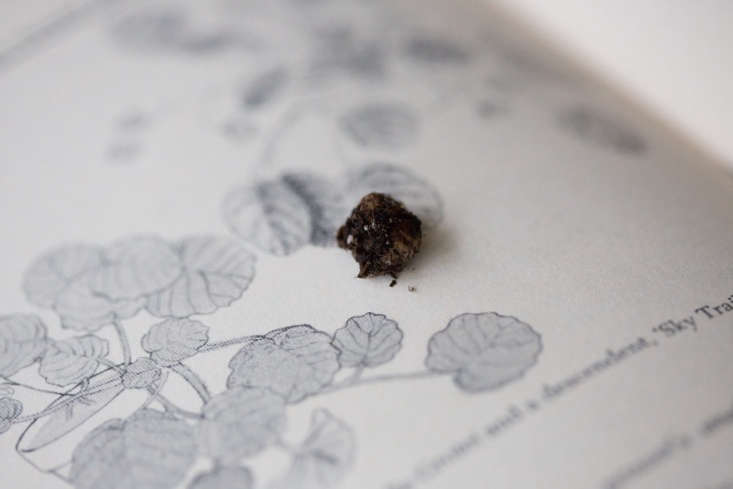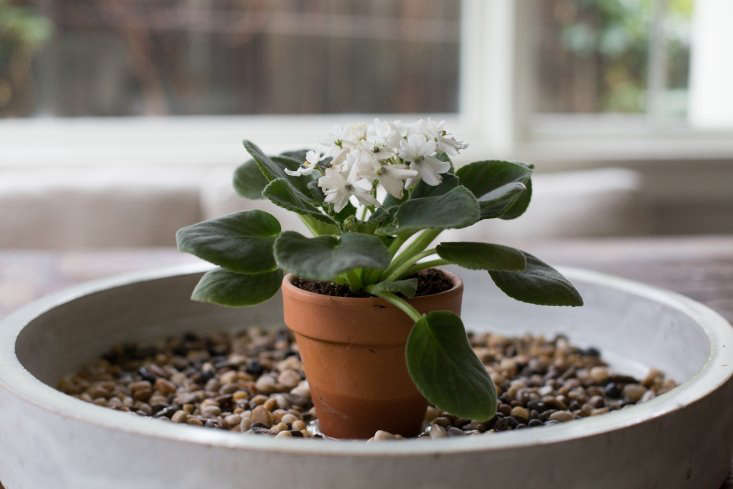The African violets discovered in Africa in 1892 by a colonial plantation owner named Baron Walter von Saint Paul-Illaire had clusters of velvety blue flowers. So did all the plants grown from the seeds he sent back to Europe. After they were exhibited the next year at an international horticultural show in Belgium, Saintpaulia ionantha catapulted to fame, becoming a prize flower for houseplant collectors.
Within decades, these humidity-loving houseplants had been hybridized into colors of pink, white, purple, and yellow—and were making themselves at home on top of steamy radiators across America. There they sat like fuzzy-leafed kings, coddled by my grandmother and yours, who pored over the pages of All About the African Violet, America’s Favorite House Plant by Helen Van Pelt Wilson (“author, lecturer, and editor”) in search of tips to keep their finicky flowers in bloom.
By the time a well-worn copy of The African Violet fell into my hands via Etsy seven decades after the book’s publication, African violets were no longer America’s favorite houseplant. But they should be. All they need to thrive is to feel at home.
Photography by Mimi Giboin for Gardenista.

Armed with tips and tricks from Mrs. Van Pelt Wilson, I recently bought five African violets in exuberant bloom and resolved not only to keep them alive but also to keep them in flower. Six weeks in, things are going well. Here are Mrs. Van Pelt Wilson’s secrets, revealed.

The main things you need to know to grow African violets successfully are: when to water them, how much sun they need, what kind of soil they like, and how to encourage a long season of blooms.
How to Choose an African Violet

When shopping for an African violet, don’t buy plants that have suckers (which crowd the plant), side shoots coming out of a main stalk, or multiple crowns grown in the same container. Any of these conditions will hamper the blooming cycle of your plant.

How to Increase Humidity Levels

When I water my African violets, water runs out the pots’ drainage holes; I let the plants sit in it while it evaporates. Other ways to increase humidity: “Place open containers of water among the plants,” suggest the experts in one of Mrs. Van Pelt Wilson’s books.
How to Know When to Water

“If it makes a ball, the plant does not need water,” say the experts. “If it is too dry to adhere in a little ball, the plant undoubtedly needs water.”
How to Water an African Violet

Some experts suggest watering the plant from below: Fill its tray or saucer with water and let the plant draw it up through the pot’s drainage holes.
Personally? I water the plants from above, being careful not to get water on the leaves.
How Often to Fertilize

A fertilizer formulated specially for African violets will contain equal parts of nitrogen, phosphorus, and potassium.

- Yes, We Can! Bringing Back Grandma’s Violets
- 5 Houseplants that Changed History
- 8 South African Flowers for American Gardens
Finally, get more ideas on how to plant, grow, and care for various houseplants with our Houseplants: A Field Guide.
Additionally, get more ideas on how to successfully plant, grow, and care for violets with our Violets: A Field Guide.
Finally, get more ideas on how to plant, grow, and care for various perennial plants with our Perennials: A Field Guide.
Interested in other tropical plants for your garden or indoor space? Get more ideas on how to plant, grow, and care for various tropical plants with our Tropical Plants: A Field Guide.










Have a Question or Comment About This Post?
Join the conversation